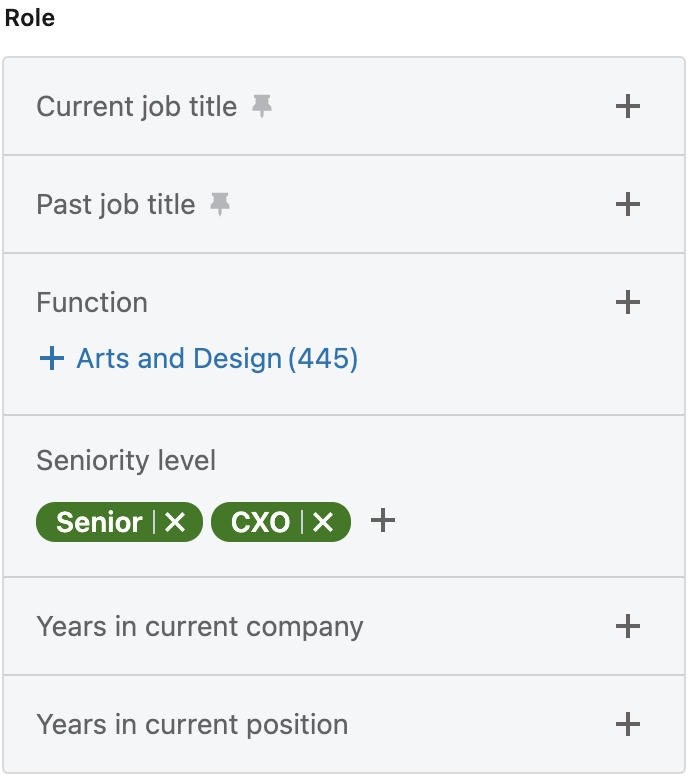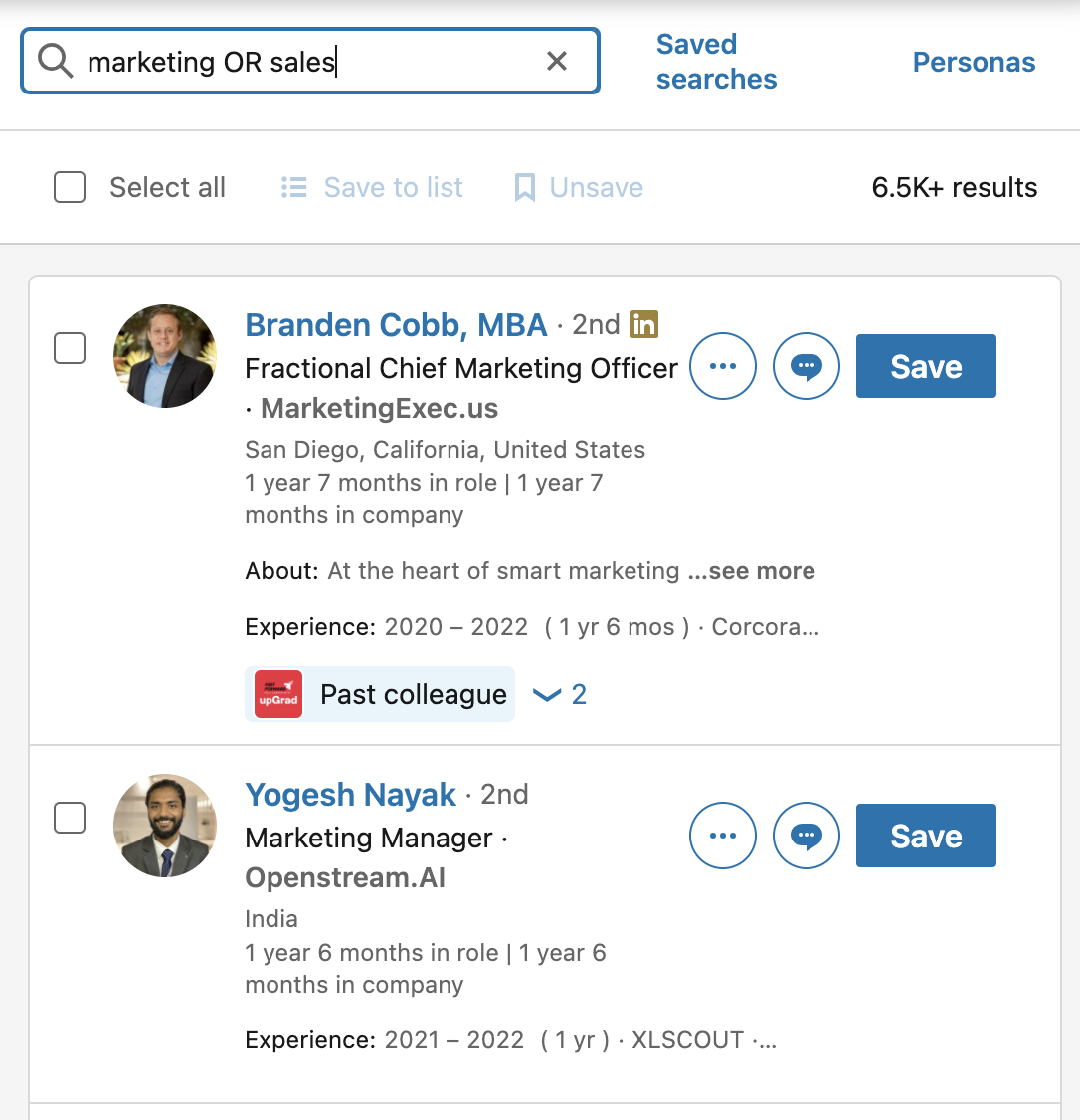How to Do Keyword Searches on LinkedIn Sales Navigator
Are you optimizing your LinkedIn profile for targeted keywords? If not, then you should start today! In this guide, we'll show you how it's done.
Looking to fine-tune your LinkedIn sales efforts?
Have you noticed something wrong with your LinkedIn sales strategy? Although the platform is known for its ability to generate high-quality leads, it doesn’t always work out as well as you’d like.
The likely reason: You’re not using your keyword searches accurately!
LinkedIn comes with powerful tools for defining and refining your search strategy; simply searching keywords that you think are relevant isn’t enough.
A staggering 93% of B2B marketers are using LinkedIn for organic social marketing, with 77% reporting their best organic results from the platform. Most of this credit goes to the LinkedIn Sales Navigator, a crown jewel among tools that helps you tap into the platform’s extensive network, generate high-quality leads, and land more clients.
Let’s explore how you can make the most of LinkedIn Sales Navigator. We have quite a collection of proven tips and tricks to bolster your LinkedIn sales strategy, whether you can access premium tools or not.
What Is LinkedIn Sales Navigator?

Let’s start with an overview of LinkedIn Sales Navigator features.
Currently, the LinkedIn Sales Navigator has 35 lead filters and 16 account filters, plus the keywords filter they have in common.
The keyword filter lets you search for leads by keywords in the lead's name, headline, company, job title, and other fields. That accounts for the widest net you can cast on the platform.
Other filters allow you to search through specific categories, including:
- Companies by name, industry, size, and location.
- Job titles by name, function, and level.
- Locations, including country, region, state, city, and postal code.
- Industries by name and sub-industry.
- Seniority levels by title, level, and years of experience.
- Schools by name, location, and degree.
Apart from these, LinkedIn also packs a few novel filter features that let you search for:
- LinkedIn groups by name, industry, and location.
- Leads who are connected to you or your colleagues by first name, last name, and company.
- Leads who have been active on LinkedIn recently, including by the type of activity, such as posting a new update, connecting with someone, or viewing your profile.
- Leads who show signs of buyer intent through various activities such as visiting your website, viewing your product pages, or downloading your content
LinkedIn Sales Navigator isn’t just an extensive range of filters–it also helps you segment leads, save, share, and even get alerts on their business activities to help you approach them at the right moment.
Tips and Tricks For Your LinkedIn Keyword Searches
Knowing the best way to use keyword searches gives you a considerable edge over others who also have the tool.
One way to get an edge in your LinkedIn searches is by using AI for lead generation. Though generative AI is not currently being used by a majority of B2B marketers due to a lack of familiarity, 75% of them say they are excited about investing in it in the next year.
With that in mind, let’s begin our deep dive into keyword searches on LinkedIn:
1. Understanding Boolean Search
Boolean operators help combine and exclude different keyword searches to generate more precise results.
The common operators, which must always be capitalized, are:
- AND - which will show you results that necessarily have all the terms you have connected with ‘AND’
- OR - which will show you results that have any one of the terms you have connected with ‘OR’
- NOT - which will exclude all results with terms that have been paired with ‘NOT’
When using Boolean operators, you must use quotation marks to separate different search terms. Similarly, you can use parentheses to group terms. For example:
(“content writer” OR copywriter) NOT “content manager”
You can use these Boolean searches within specific filters, such as Job Title or School, to search through the relevant section of profiles.
2. Effective Query Formulation
Ask yourself questions from the user’s perspective when creating buyer personas, since most information on LinkedIn is from user-identified information. For example, what are some synonyms that people could be using for the same job title?
You can also search for relevant decision-makers in specific companies by both using the seniority filters as well as excluding irrelevant titles (assistants and interns, for instance). Sometimes, seniority filters aren’t accurate enough since the level of seniority is determined by LinkedIn itself, so use a diverse range of keywords to target specific positions.
3. Create Account Lists
You can narrow down leads further by creating Account Lists, which you can easily access later for specific searches.
Start by filtering and saving companies to your account list by matching your Ideal Customer Profile (ICP). You can put all these accounts in a list and name it for future reference. You can then use further lead filters on these saved lists.
4. Utilizing Saved Searches
Once you have set up your filters and made searches, you can save the most relevant ones. Sales Navigator will automatically give your relevant lead recommendations and alerts for new accounts on your saved search.
5. Leverage Second-Degree Network
Although you could be making connections on LinkedIn by targeting those you don’t know, we recommend filtering search results to your second-degree network. Leads are less likely to accept your requests and engage back if you come off as a complete stranger.
There’s little to worry if your second-degree network isn’t that large! As you start using it to connect with a broader range of people, they become first-degree connections, further fuelling your second-degree network.
6. Blacklisting for Efficiency
Like most savvy marketers, you can make a negative ICP too. This ‘blacklist’ lets you exclude irrelevant results that sneak into your searches. You can further refine your lists by blacklisting past contacts, competitors, and existing clients. Another smart way to improve search accuracy is by exploring the last page results to look for keyword patterns in unwanted results and then excluding those.
7. The Sales Navigator Edge
What do most people do when they start a job or a business? Update their LinkedIn profiles. At the end of the day, the platform will always have some of the most fresh and up-to-date data regarding a wide demographic of users. If you’re using Sales Navigator, take advantage of being able to send more invitations every day to thoroughly access the LinkedIn database.
Additionally, Sales Navigator Advanced subscribers should keep in mind that they can integrate existing lead lists as CSV files for even more precise targeting.
Creating Lead Lists For Different Target Audiences
Even if you’re using AI for LinkedIn messaging or to optimize the results of conducting lead lists, you’re still going to need to make an initial search list. Let’s break down how.
Let’s say you’re a B2B sales rep looking for buyers of your software product or service, which has applications in sales, marketing, and project management.
You might want to start in the “Personal” tab and sort by “Industry”. Companies that identify as being in “Marketing Services” sound ideal.
As we’ve mentioned before, it’s recommended to start the search by keeping it to second-degree connections to see if there are easier paths to leads.

After this, you want to consider the type of people you’re contacting. If you’re selling a software product that will have large implications for a marketing company, you’d want to talk to key decision-makers. Use the “Role” tab to search for specific job titles and seniority levels in such cases.

That will help you get your initial list of leads in the search results. You can refine these further by using the keyword search. For our example, we’ve kept it to the broad:
marketing OR sales (notice the use of the Boolean operator)
This helps us find the most relevant decision-makers who are likely to respond. Depending on where you operate, you can also filter by geographical location.

Click save on the right to add the lead to a list. As your list fills up, you can refer to it later or search further through it using new filters.
How Do You Convert Your Initial Search List To More Sales?
If you’ve mastered keyword search, you might be looking for ways to organize your data, reach out to leads, and convert them into sales!
Copilot AI is your comprehensive solution to these problems. We use artificial intelligence to help you identify the best people from your search lists, outreach to them better, and have higher-quality conversations.
Our tool lets you optimize your efforts to increase the proportion of prospects you message who fit into your ICP.
Find out more about how CoPilot AI can lead to better sales conversions from LinkedIn by booking a free consultation today!



